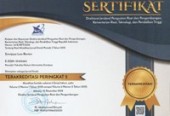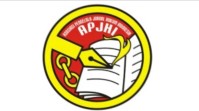Rethinking Indonesian Legislation on Wildlife Protection: A Comparison between Indonesia and the United States
Abstract
In Indonesia, a crime against wildlife is still not well controlled. Several reasons are the fact that certain wildlife is still considered a threat by the community and the lack of implemented criminal sanctions. This paper compares the application of sanctions to perpetrators of wildlife crimes between Indonesia and America. Based on the Indonesian Law, Article 40(2) of the Law on Conservation of Living Natural Resources and their Ecosystems, a person who commits a crime against individual wild animals can be imprisoned for a maximum of five years and a maximum fine of one hundred million rupiahs. Meanwhile, the United States Law, the Endangered Species Act (ESA), charges wildlife criminals with criminal and civil penalties. In § 1540(a)(1) it provides that anyone who takes, imports, exports, transports or sells endangered species can be fined not more than $ 25,000. If the species is threatened in the group, the offender can be subject to a sentence of not more than $ 12,000. Also, additional criminal sanctions were imposed to revoke federal licenses, lease permits and hunting permits. This study aims to analyse criminal sanctions' enforcement in criminal cases against protected animals in courts in Indonesia and the United States to find best practices using normative legal research methods. The results show that the criminal sanctions against wildlife crimes in Indonesia have never reached the maximum sentence so that it is not sufficient to provide a deterrent effect for the perpetrators. Unlike in America, the imprisonment sanction for criminal sanctions for protected animals is still relatively weak, but fines and civil sanctions can be maximally applied.
Keywords
Full Text:
PDFReferences
Adams, Joseph Q. “Retribution Requires Rehabilitation.” Georgia State University, 2008. https://scholarworks.gsu.edu/philosophy_theses/35/.
Aditya, Nur. “Orangutan Mati Ditembaki 130 Peluru, Pelakunya Satu Keluarga.” https://www.merdeka.com/peristiwa/orangutan-mati-ditembaki-130-peluru-pelakunya-satu-keluarga.html, 2018.
Article 20 Paragraph (1) Law Number 5 of 1990 (n.d.).
Article 21(2). [Law No. 5 of 1990] (n.d.).
Bengis, United States v. “United States Court of Appeals, Second Circuit.” Findlaw, 2011. https://caselaw.findlaw.com/us-2nd-circuit/1551141.html.
https://www.bjs.gov/index.cfm?ty=tp&tid=7. “Bureau Justice of Statistics,” n.d.
Carlsmith, Kevin M. “The Roles of Retribution and Utility in Determining Punishment.” Journal of Experimental Social Psychology 42, no. 4 (2006): 437–51. https://doi.org/ 10.1016/ j.jesp.2005.06.007.
Case Number: 130/Pid.B/LH/2018/PN Sgt. (n.d.).
Case Number: 27/Pid.B/LH/2018/PN BNT (n.d.).
Case Number: 376/Pid.B/LH/2018/PN Plg (n.d.).
Clavette, United States V. “United States Court of Appeals, Ninth Circuit.” Findlaw, 1998. https://caselaw.findlaw.com/us-9th-circuit/1221790.html.
FAO. “Principles For Developing Sustainable Wildlife Management Laws,” 2008.
Freyfogle, Dale D. Goble & Eric T., Wildlife Law: Cases and Materials. New York: Foundation Press, 2010.
Hardjasoemantri, Koesnadi. Hukum Tata Lingkungan. Cet. 17. Yogyakarta: Gadjah Mada University Press, 2002.
Ir, Bambang. “Sadis, Orangutan Mati Akibat Ditembus 130 Peluru.” https://news.okezone. com/read/2018/02/07/340/1855928/sadis-orangutan-mati-akibat-ditembus-130-peluru, 2018.
Long, Andrew. “Developing Linkages to Preserve Biodiversity.” Yearbook of International Environmental Law 21, no. 1 (2010): 41–80. https://doi.org/doi:10.1093/yiel/yvr002.
Madden, Francine M. “The Growing Conflict Between Humans and Wildlife: Law and Policy as Contributing and Mitigating Factors.” Journal of International Wildlife Law & Policy 11, no. 2–3 (2008): 189–206. https://doi.org/10.1080/13880290802470281.
Maria Voigt, Et.al. “Global Demand for Natural Resources Eliminated More Than 100,000 Bornean Orangutans, Current Biology.” http://www.cell.com/current-biology/ fulltext/S0960-9822(18)30086-1, DOI: https://doi.org/10.1016/j.cub.2018.01.053.
Marlina. Hukum Penintensier. Bandung: PT. Refika Aditama, 2011.
Morgera, Elisa, James Wingard, and Alessandro Fodella. Developing Sustainable Wildlife Management Laws in Western and Central Asia. Edited by Kai-Uwe Wollscheid. FAO and CIC, 2009.
Morris, Herbert. “Persons and Punishment.” The Monist 52, no. 4 (1968): 475–501. https://doi.org/10.5840/monist196852436.
Nelson, Lisa. “Managing Human-Wildlife Interaction.” International Journal of Public Administration 31, no. 3 (2008): 287–97. https://doi.org/10.1080/01900690701590488.
Rahmadi, Takdir. Hukum Lingkungan Di Indonesia. Cetakan 1. Jakarta: PT. Raja Grafindo Persada, 2011.
“The United States v. McKittrick (142 F.3d 1170),” 1998. https://caselaw.findlaw.com/us-9th-circuit/1286007.html.
UNODC. “Defining Transnational Organized Wildlife Crime.” https://www.unodc.org/ documents/data-and-analysis/wildlife/WLC16_Chapter_1.pdf, 2016.
USAID. Perdagangan satwa liar, Kejahatan terhadap satwa Liar dan perlindungan, Spesies di indonesia: Konteks kebijakan dan Hukum Changes for justice Project, issued 2015.
DOI: http://dx.doi.org/10.28946/slrev.Vol5.Iss1.881.pp143-162
Refbacks
- There are currently no refbacks.

Sriwijaya Law Review (SLRev) ISSN: 2541-5298 | e-ISSN: 2541-6464 is licensed under a Creative Commons Attribution-ShareAlike 4.0 International License.






















